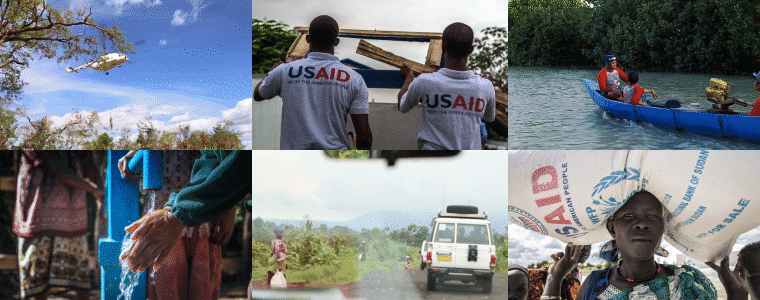- What We Do
- Agriculture and Food Security
- Democracy, Human Rights and Governance
- Economic Growth and Trade
- Education
- Environment and Global Climate Change
- Gender Equality and Women's Empowerment
- Global Health
- Humanitarian Assistance
- Transformation at USAID
- Water and Sanitation
- Working in Crises and Conflict
- U.S. Global Development Lab
Speeches Shim

Responding to Humanitarian Emergencies
USAID’s Bureau for Humanitarian Assistance (BHA) provides life-saving humanitarian assistance—including food, water, shelter, emergency healthcare, sanitation and hygiene, and critical nutrition services—to the world’s most vulnerable and hardest-to-reach people. This includes helping internally displaced people who have been forced to flee their homes, as well as providing food assistance to refugees who have crossed national borders.
Our staff are located in Washington, D.C., and in five regional offices and 37 countries with expertise in a variety of humanitarian sectors. These experts provide strategic direction and program oversight. They monitor global hazards and assess potential areas of need. They stand ready to respond.
As the lead federal coordinator for international disaster assistance, BHA also collaborates with a vast network of global humanitarian partners—including UN agencies, other donor governments, NGOs, the private sector, local governments, affected communities, the U.S. military, and other U.S. agencies—to respond to urgent humanitarian needs. We also maintain warehouses around the world stocked with emergency food and critical relief supplies that we can mobilize at a moment’s notice.
On average, we respond to 75 disasters in more than 70 countries each year. Take a look at where we work.
Helping Communities Move Beyond Crisis
BHA does more than respond to disasters. We help crisis-affected communities by building on our humanitarian responses and supporting early recovery efforts that restore and protect basic systems and services. We invest in risk reduction programs that prevent or reduce risks associated with chronic and recurrent hazards. We build the resilience of people, communities, countries, and systems by helping them mitigate, adapt to, and recover from shocks and stresses in a way that reduces chronic vulnerability and facilitates inclusive growth.
Read more about our early recovery, risk reduction, and resilience (ER4) work around the world.

Comment
Make a general inquiry or suggest an improvement.